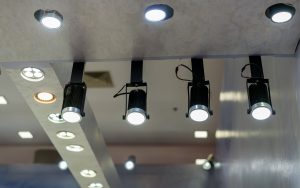Lease Your Way to Local Law 88 and 134 Compliance
By George Crawford
 Ever wonder about the cost for a LED retrofit? The question isn’t rhetorical. Virtually every building in New York City greater than 25,000 s.f. will need to upgrade to LED lighting to comply with Local Laws 88 and 134.
Ever wonder about the cost for a LED retrofit? The question isn’t rhetorical. Virtually every building in New York City greater than 25,000 s.f. will need to upgrade to LED lighting to comply with Local Laws 88 and 134.
While compliance requirements are described below, keep in mind that every LED retrofit saves on energy costs. The amount of savings depends entirely on the type of lighting replaced and the LED products selected. Replacing incandescent lights with LED products offers the greatest savings, recouping the investment in about one year. The next savings level comes from replacing fluorescents with LED products, paying back the costs in the two-year range.
Now, back to compliance.
LL 88 and LL 38 Compliance
Commercial and industrial buildings will need to upgrade all interior lighting to LED. This category includes both hotels assisted-living facilities that exceed 25,000 s.f. in size. Requirements include lighting upgrades for all common areas, as well as living areas. Multifamily properties that exceed 25,000 s.f. are also covered by Local Laws 88 and 134; however, the upgrade requirements are limited to common areas. Residential units in multifamily buildings are excluded from these requirements.
Upfront costs for these upgrades can be substantial. Think in terms of a $50,000 price tag—from start to finish—for the average multifamily property. Certainly, this number can go lower or higher, depending on building size and fixture count. For commercial and industrial buildings, where living areas must also be upgraded, costs will run higher since more lighting is involved.
While some buildings have already completed their LED upgrades, the majority have yet to comply. The rate of progress toward LL 88 and 134 compliance will need to increase, as the window of opportunity to address these requirements is closing.
Supply and Demand
The January 1, 2025, deadline may seem distant, but there is an imbalance between the large number of buildings that need to comply and the small number of providers that are qualified to perform the LED retrofit. While New York City has many licensed electrical contractors, only a very few that have the knowledge and expertise to successfully perform LED retrofit work.
One specific qualification to look for project modeling, which allows a vendor to determine the electric savings offered by LED product options. Additional qualifications include:
- The ability to retrofit existing lighting fixtures with LED modules while maintaining lighting aesthetics
- The ability to calibrate battery back-up LED stairwell fixtures
LED lighting is a specialized field of work, with a limited number of qualified providers. Given the very large number of buildings that have yet to comply, it is only a question of time before this imbalance becomes a serious backlog problem.
Leasing and Financing
We recommend that buildings get started with their LL 88 and LL 134 compliance. For buildings that want to start, but have competing projects, we suggest exploring a project financing option, such as equipment leasing.
Equipment leasing will provide 100% of the up-front funding required for implementation of a LED retrofit (purchase and installation). The “debt service” consists of fixed monthly payments for a term of two to five years. At the end of the lease term, the installed LED product is purchased for $1.
We contacted the M-Core Credit Corp regarding the practicality of lease financing, which M-Core has been providing for more than 20 years. According to M-Core Principal Michael Weisberg, “The financing process is simple. As an example, the one-page lease financing application for co-ops and condos consists of the name and address of the building, their bank and a copy of their annual statement, as provided to their shareholders or condo owners. The approval process is fast—usually three to five business days.”
He further says, “Financing a project such as LED lighting makes sense as the LED project will provide sufficient savings that will more than offset the related financing costs. The project not only pays for itself, but it can also provide free cash flow to the building.”
An actual example of a lease arrangement for a LED retrofit follows:
The scope of this project for a two-building multifamily complex involves the replacement of all existing common area and garage lighting with LED. The existing lighting consists of a variety of fluorescent and incandescent lighting products. The cost of the retrofit, with installation, totals $55,840.00. The monthly electric utility savings is $2,737.08. The project lease financing provides an upfront payment to the vendor(s) of $55,840.00—equal to the full cost of the project. The building selects their monthly lease payment schedule. With a 24-month schedule, the monthly payment would be $2,574.22—which closely matches the savings. If the maximum 5-year schedule is selected, the monthly payments would be $1,183.81—less than 50% of the monthly savings realized. At the conclusion of the lease payments, the purchase price is $1.00.
Get started. Send Michael an email with your questions. Avoid the inevitable LL 88 and LL 134 compliance crunch by beginning the process now.

